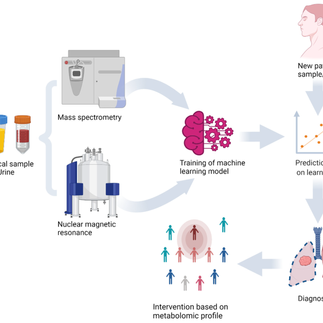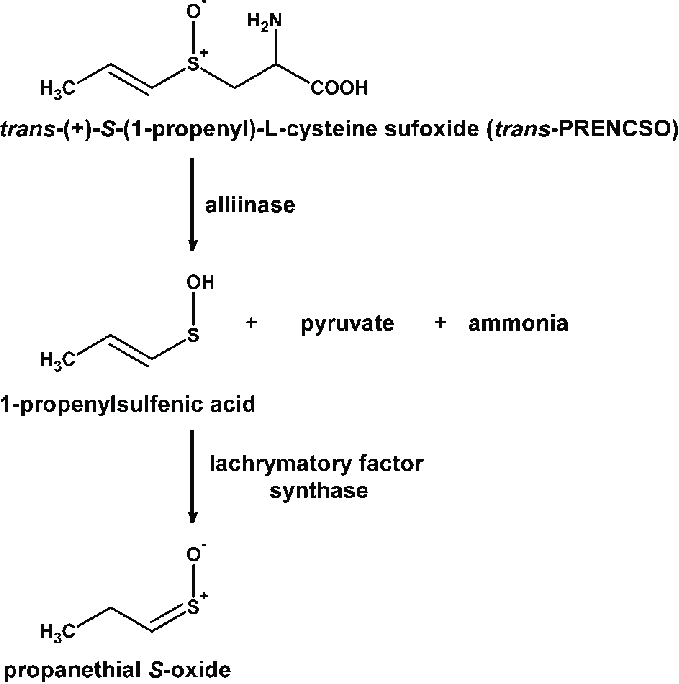Unlocking the Secrets of Life: The Power of Metabolomics.
- Janani J
- Feb 17
- 5 min read
Introduction
In life sciences, metabolomics is a rapidly advancing field that offers a unique look into the intricate biochemical activities within organisms. It provides researchers with the tools to uncover the core of cellular functionality, giving rise to transformative insights in health, disease, agriculture, and biotechnology. Let’s dive into what metabolomics involves, its significance, and the impact it has on modern science and medicine.
Understanding Metabolomics
Metabolomics is the detailed analysis of metabolites—the small molecules created during metabolic processes. It provides a snapshot of all ongoing biochemical reactions within an organism at a specific time. These metabolites, which include amino acids, fatty acids, lipids, and sugars, reveal the immediate physiological state of cells, tissues, or entire organisms. Given that metabolism is central to sustaining life, analysing these molecules allows researchers to assess the real-time state of biological systems.
Fig: Metabolism pathway
Why Metabolomics is Important
Metabolomics provides a unique view of how cells respond directly to various environmental factors, genetic changes, or disease states. This insight complements genomics, proteomics, and transcriptomics by illustrating how genetic and protein-based elements translate into active cellular functions.
1.Personalized Medicine: By examining an individual’s metabolite profile, doctors gain insights into a person’s specific biochemical makeup, allowing for customized treatment approaches. It also enables tracking treatment responses, paving the way for precise, patient-centered care.
2.Disease Diagnosis and Biomarker Discovery: Metabolomics can identify biomarkers—molecular indicators linked to diseases. This is particularly useful for early diagnosis of conditions like cancer, diabetes, and neurodegenerative disorders, where timely intervention is critical.
3.Agricultural Improvement: Metabolomics aids in enhancing crop yields, improving nutritional value, and increasing resistance to pests. By exploring plant metabolic pathways, researchers can cultivate crops that are more resilient to environmental stressors and more nutritious.
4.Environmental Monitoring: Metabolomics also supports ecological health assessments. By analysing metabolites in plants or microorganisms within ecosystems, scientists can detect pollutants, toxins, or environmental stress responses, helping monitor and manage ecological changes.
How Metabolomics Works
Metabolomics starts with the collection of samples from biological sources like blood, urine, tissues, or plants. These samples are then examined using advanced methods such as mass spectrometry (MS) and nuclear magnetic resonance (NMR) spectroscopy to detect and measure metabolites. Afterward, data analysis is performed with computational tools, often incorporating bioinformatics and machine learning to interpret complex data sets.
The process can follow two main approaches: targeted and untargeted metabolomics. In the targeted approach, researchers focus on specific metabolites associated with known pathways or conditions. In contrast, untargeted metabolomics examines all metabolites within a sample, aiming to uncover novel patterns or unknown metabolic pathways. This adaptability allows metabolomics to be used effectively across diverse areas of research.
Detailed Overview of How Metabolomics Works
Metabolomics involves several carefully coordinated stages, from collecting biological samples to interpreting complex data, each requiring specialized methods and technologies. Here’s a breakdown of the process in more detail:
1.Sample Collection and Preparation
The process starts with collecting biological samples like blood, urine, tissue, or plant material, each containing a unique profile of metabolites. Proper storage and handling are crucial to maintain sample integrity, as metabolite levels can fluctuate due to environmental changes. Sample preparation may involve extraction techniques tailored to specific metabolite types—such as polar (e.g., sugars, amino acids) or nonpolar compounds (e.g., lipids)—using solvents, freeze-drying, or homogenization.
2.Analytical Techniques: Mass Spectrometry (MS) and Nuclear Magnetic Resonance (NMR)
To identify and quantify metabolites, researchers often use two primary technologies:
Mass Spectrometry (MS) and Nuclear Magnetic Resonance (NMR) spectroscopy.
Mass Spectrometry (MS): In MS, metabolites are ionized and separated based on their mass-to-charge ratio. This technique, often combined with separation methods like liquid chromatography (LC) or gas chromatography (GC), can detect a wide array of metabolites with high precision. LC-MS and GC-MS are especially valuable in metabolomics for their sensitivity and ability to analyse diverse compounds.
Nuclear Magnetic Resonance (NMR) Spectroscopy:
NMR examines metabolites through the magnetic properties of atomic nuclei (like hydrogen or carbon). Unlike MS, it’s a non-destructive method, allowing researchers to analyse intact samples. Though NMR is less sensitive, it provides consistent, structural information and requires minimal sample preparation.
3.Data Acquisition and Processing
Data obtained from MS or NMR is complex, appearing as spectra or chromatograms that represent the metabolites in a sample. Processing involves steps like baseline correction, peak alignment, and deconvolution to identify each compound accurately and prepare the data for detailed analysis.
4.Approaches: Targeted vs. Untargeted Metabolomics
Researchers then choose a targeted or untargeted approach:
*Targeted Metabolomics: This focuses on a select group of known metabolites relevant to specific pathways or physiological conditions, such as glucose levels in diabetes research. It allows for accurate measurement of predefined biomarkers.
*Untargeted Metabolomics: Here, researchers explore all detectable metabolites without prior assumptions, ideal for discovering new patterns or previously unknown pathways. This approach often uses statistical and computational techniques, like machine learning, to identify and analyse novel metabolite profiles.
5.Bioinformatics and Statistical Analysis
Metabolomic data is extensive, typically involving hundreds or thousands of metabolites, so bioinformatics and statistical tools are essential for analysis. Techniques like principal component analysis (PCA) and partial least squares discriminant analysis (PLS-DA) help identify patterns and reveal significant changes among sample groups.
6.Pathway Mapping and Biological Interpretation
After identifying key metabolites, researchers place them within known biochemical pathways using tools like KEGG (Kyoto Encyclopaedia of Genes and Genomes) and Metaconflict. This step helps clarify the biological significance of metabolic changes, linking findings to broader cellular functions or disease mechanisms.
7.Biomarker Discovery and Validation
If the study aims to find disease biomarkers, further experimental or clinical testing is needed to confirm that these markers are consistent across larger and diverse populations, establishing their reliability for potential diagnostic or therapeutic applications.
8.Integration with Other -Omics Data
To gain a comprehensive view, metabolomics data is increasingly integrated with data from genomics, proteomics, and transcriptomics. This multi-omics approach provides a holistic understanding, connecting metabolic changes to gene expression or protein alterations, revealing broader insights into cellular function and organism health.
Future Prospects of Metabolomics
*Personalized Healthcare: Enabling tailored therapies, real-time monitoring of treatments, and early detection of diseases by analysing individual metabolic profiles.
*Biomarker Identification: Developing non-invasive diagnostic tools for precise disease detection and effective management.
*Integration with Multi-Omics: Combining data from genomics, proteomics, and transcriptomics to gain a holistic view of biological systems.
*Agricultural Innovations: Improving crop resilience, enhancing nutritional value, and promoting sustainable farming practices.
*Environmental Applications: Monitoring ecosystems for pollutants, studying responses to climate change, and supporting conservation efforts.
Fig: Precision medicine approaches with metabolomics and AI
Conclusion
Metabolomics is emerging as a transformative field, offering unparalleled insights into the intricate metabolic processes of living systems. Its applications span across healthcare, agriculture, and environmental science, driving advancements in personalized medicine, sustainable farming, and global health solutions. With ongoing improvements in analytical techniques and computational tools, metabolomics is set to address critical challenges and open new avenues for discovery. By enhancing our understanding of biological systems, it holds the potential to create impactful solutions that will shape the future of science and innovation.
About the Author:
Janani . J
Biotech undergraduate
References
Image credits






Comments